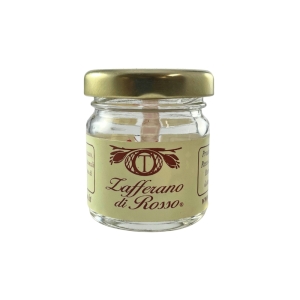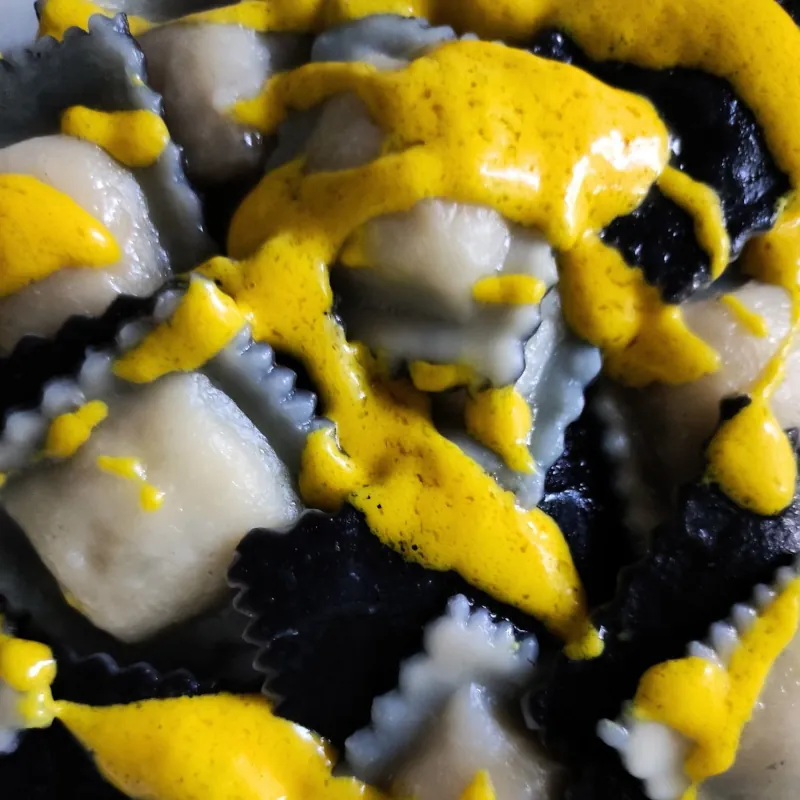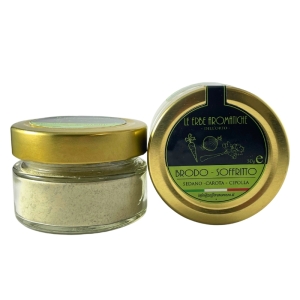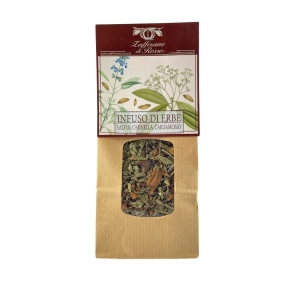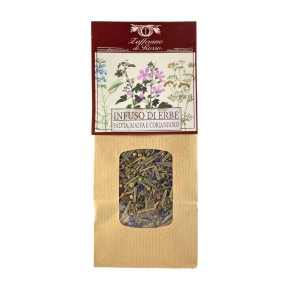SAFFRON PISTILS How to use them, storage and more!

By buying saffron pistils, you are guaranteed to have the purest spice with its best qualities. However, it is a very delicate and special ingredient that you need to know well before using it in the kitchen. Here, then, is our handy guide to everything you need to know about saffron pistils.

From the flower to your plate
In autumn, the fields of Davagna turn lilac: saffron flowers sprout here and there. In Davagna, on the heights of Genoa, Daniel Fida has been cultivating saffron locally for a few years now. During the month of August, Daniel sows the bulbs of the plant and from mid-October, the Crocus sativus (yes, that is its real name) starts to flower. For a month, Daniel wakes up before dawn every morning to go out into the fields to check on the blossoming: in order not to spoil the flowers, Daniel has to pick them all by hand before they hatch. The same care is required when processing the stigmas. The stigmas are those red filaments, which are then the spice we commonly know as saffron.
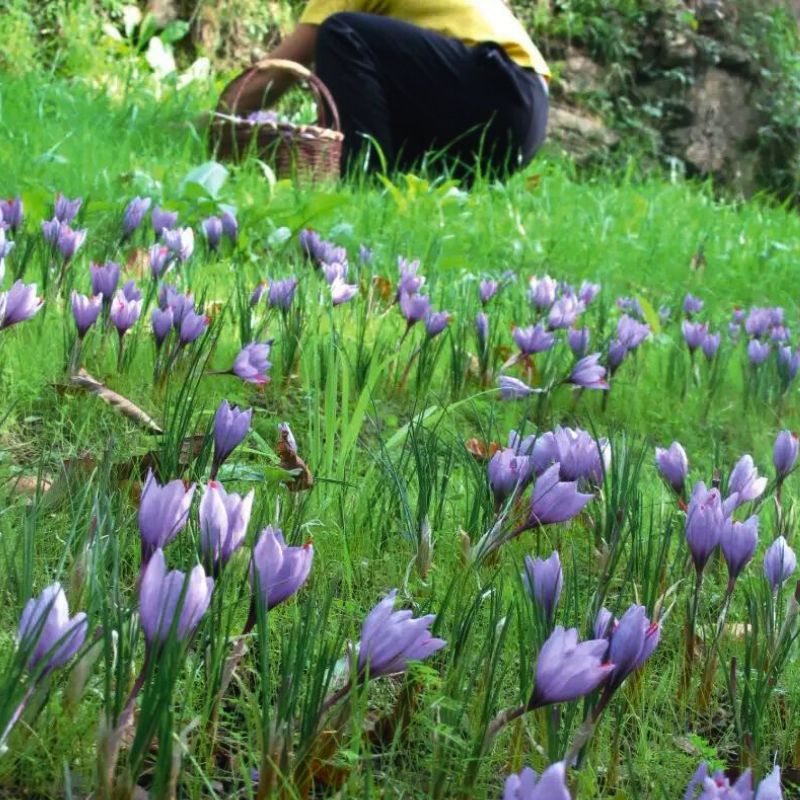
Stigmas and pistils would not be synonymous because the stigma is only part of the pistil but for convenience we will continue to refer to the stigmas as pistils because that is how most people know them. It has to be said that this is actually not a small difference: the one you buy from us is pure saffron, just its stigmas, while the one you find in the supermarket in sachets is mixed with other parts of the plant (and only that if you're lucky...)
Anyway, we had left Daniel busy with his saffron flower harvest. Each flower contains three filaments and from 150 flowers Daniel will get at most one gram of the final product he buys. The stigmas are removed from the flowers by hand and then dried. All this has to be done on the same day as the harvest. The care that Daniel puts into his work is important for the end result of your recipe, avoiding processes that stress you will have the best quality ingredient. And after all that work, it would be a shame to misuse these precious stigmas, so read our advice below on how to use saffron pistils.
In autumn, the fields of Davagna turn lilac: saffron flowers sprout here and there. In Davagna, on the heights of Genoa, Daniel Fida has been cultivating saffron locally for a few years now. During the month of August, Daniel sows the bulbs of the plant and from mid-October, the Crocus sativus (yes, that is its real name) starts to flower. For a month, Daniel wakes up before dawn every morning to go out into the fields to check on the flowering: so as not to spoil the flowers, Daniel has to pick them all by hand before they open. The same care is required when processing the stigmas. The stigmas are those red filaments, which are then the spice we commonly know as saffron.
Stigmas and pistils would not be synonymous because the stigma is only part of the pistil but for convenience we will continue to refer to the stigmas as pistils because that is how most people know them. It has to be said that in reality this is no small difference: what you buy from us is pure saffron, just its stigmas, while what you find in the supermarket in sachets is mixed with other parts of the plant (and only that if you're lucky...).
Anyway, we left Daniel busy with his saffron flower harvest. Each flower contains three filaments and from 150 flowers Daniel will get at most one gram of the final product he buys. The stigmas are removed from the flowers by hand and then dried. All this has to be done on the same day as the harvest. The care that Daniel puts into his work is important for the end result of your recipe, avoiding processes that stress you will have the best quality ingredient. And after all that work, it would be a shame to misuse these precious stigmas, so read our advice below on how to use saffron pistils.
How to use saffron pistils
To use saffron pistils in your recipes, they must first be left to infuse, and cannot be added directly to the other dry ingredients. You only need half a glass (or a cup) of water, broth or milk; any liquid that suits your preparation. The liquid for the saffron infusion must be hot but not boiling, maximum 50°C. As infusion times are long, at least two hours, to keep the liquid hot all the time remember to cover the chosen container (if you want you can also heat in a bain-marie without boiling).
The saffron infusion can also be after brewing, up to 48 hours from when you put the pistils into the hot liquid. It is therefore better to get ahead of the work and make the infusion the day before, for example, if you want to save time compared to turning the pistils into powder.
How to turn pistils into saffron powder
Saffron powder can be used directly without infusion and is therefore faster: however, to obtain this powder you must first roast the saffron pistils and saffron is thermolabile, i.e. it is an ingredient that loses quality at too high a temperature. To make this saffron powder, you have to take the pistils and put them inside a small packet of baking paper, then place a hot object (usually a saucepan) over them. After 10 minutes the pistils can be crushed by crushing them with something, a pestle or a meat pounder, again inside the baking paper.
Once you have your saffron infusion ready you add it at the end of cooking, in the last few minutes before turning off the heat. If, on the other hand, the recipe calls for slow cooking in a lot of liquid then you can also try putting the pistils directly into the pot, always paying attention to the temperature.
How to use saffron pistils
To use saffron pistils in your recipes, they must first be left to infuse, and cannot be added directly to the other dry ingredients. You only need half a glass (or a cup) of water, broth or milk; any liquid that suits your preparation. The liquid for the saffron infusion must be hot but not boiling, maximum 50°C. As infusion times are long, at least two hours, to keep the liquid hot all the time remember to cover the chosen container (if you want you can also heat in a bain-marie without boiling).
The saffron infusion can also be after brewing, up to 48 hours from when you put the pistils into the hot liquid. It is therefore better to get ahead of the work and make the infusion the day before, for example, if you want to save time compared to turning the pistils into powder.
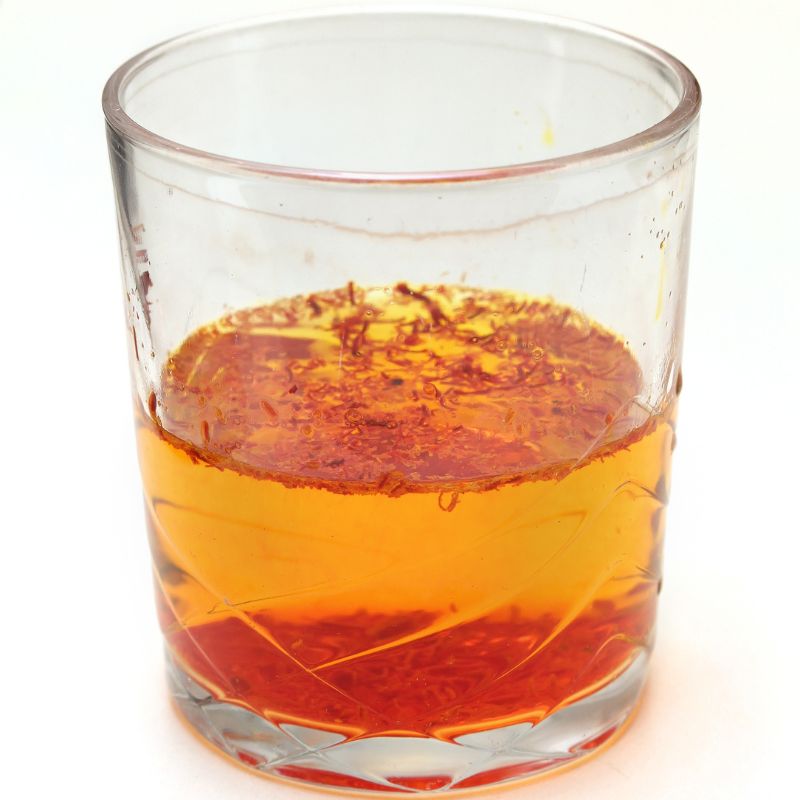
Once you have your saffron infusion ready you add it at the end of cooking, in the last few minutes before turning off the heat. If, on the other hand, the recipe calls for slow cooking in a lot of liquid then you can also try putting the pistils directly into the pot, always paying attention to the temperature.
How to turn pistils into saffron powder
Saffron powder can be used directly without infusion and is therefore faster: however, to obtain this powder you must first roast the saffron pistils and saffron is thermolabile, i.e. it is an ingredient that loses quality at too high a temperature. To make this saffron powder, you have to take the pistils and put them inside a small packet of baking paper, then place a hot object (usually a saucepan) over them. After 10 minutes the pistils can be crushed by crushing them with something, a pestle or a meat pounder, again inside the baking paper.
IN SUMMARY:
1) By buying pistils (stigmas) you can be sure of a higher quality than powdered saffron, which can instead be mixed with something else
2) To use the pistils you have to infuse them in hot liquid (below 50°C) for at least two hours
3) The infusion must be used within 48 hours and is best kept in the fridge
4) The infusion in the recipe is added at the end of the cooking time, always paying attention to temperatures
For the doses of saffron to be used, please refer to the next paragraph.
How much saffron pistils in risotto
Saffron in the Italian culinary imagination is inextricably linked with risotto, the famous yellow risotto or risotto alla Milanese. For many, therefore, saffron immediately brings to mind risotto and vice versa; it therefore seems useful to use risotto as an example for understanding the doses of saffron pistils, although we will then see how versatile this spice is from appetiser to dessert.
The doses of how much saffron in pistils you use in risotto depend both on personal taste and the size of the pistils themselves: however, we usually calculate between 5 and 10 pistils per person; for a risotto for four dishes already 30 pistils should be fine, as they are equivalent to a 0.15 gram sachet of saffron powder. So depending on your palate and your experience with saffron packets, you can adjust and use this yardstick.
In the preparation of risotto, saffron is added at the end of cooking, together with its infusion: by putting the stigmas, as well as the liquid, in the pot with the rice, you will certainly achieve a refined effect in the dish, revealing the quality of the choice of ingredients.
In which recipes to use saffron
This precious spice, with its golden colour and enveloping fragrance, lends itself to a wide range of culinary preparations, from hors d'oeuvres to desserts, offering endless possibilities for experimenting with bold and creative combinations.
Rice, with its delicacy, becomes a perfect canvas for expressing saffron's nuances of flavour. This magical spice blends harmoniously with rice, creating fragrant and enveloping dishes. From classic risottos to paella, saffron brings a touch of luxury and sophistication to every bite.
But that's not all: when it comes to seafood and shellfish, saffron is the ideal companion. Its aromatic complexity intertwines with the sweetness of shellfish, creating a marriage of flavours that will delight the most discerning palate. Try dipping succulent prawns in a saffron sauce and prepare for a taste explosion that will leave you speechless.
In the realm of white meat, saffron adds an unparalleled dimension of flavour. From traditional stew dishes to slow-cooked rabbit, this spice elevates every bite to a higher level. Its aromatic complexity and slightly bitter aftertaste create a symphony of flavours that will delight your senses.
And what about desserts? Saffron, with its earthy, warming note, adds an intriguing touch to biscuits, creams and ice cream. Experiment with a saffron panna cotta, where the creamy sweetness blends with the enveloping scent of saffron, creating a dessert that will win your heart with every spoonful. And if you want to win easy, try this jar of saffron honey to make your desserts unforgettable, one teaspoon at a time.
How to store saffron pistils
Saffron pistils are sold already dried and would not actually have an expiry date. However, Italian regulations in this regard allow a maximum of three years to be indicated on the label as the storage time within which the stigmas can be used. The pistils should be kept inside an airtight container but above all away from sources of heat, light and moisture.
If, on the other hand, it is the saffron infusion that we have prepared from the stigmas, then this must be used in your recipe within 48 hours of infusing the saffron. We recommend storing this liquid inside the fridge (or in a very cool place) to avoid loss of quality.
With which wines to pair saffron
In general, white wines accompany saffron dishes very well. These include well-structured white wines such as Chardonnay, but also more fragrant wines such as Gewurztraminer and Sauvignon. However, it is the dish itself and the other ingredients that make the difference, so we do not exclude pairing red wines or sparkling wines with saffron recipes. For example, the same risotto alla Milanese can be enjoyed while sipping a classic method sparkling wine. But even a soft red wine such as Ciliegiolo, with its fruity notes, marries beautifully with the aromas of saffron, sweetening the more bitter sides of this prized spice.
Feeling good with saffron
Immerse yourself in the golden world of saffron, a treasure for your well-being. This precious spice is not only a delight for the palate, but also an anti-age elixir, a natural boost for the metabolism and a panacea for the digestion.
At the heart of this miraculous power are crocetin, crocin and picrocrocin: powerful antioxidants that fight free radicals, the harmful molecules that accelerate ageing and threaten your vitality. These carotenoids, found in saffron stigmas, act as guardians of your cells, raising your immune defences and protecting your body from within.
But saffron doesn't stop there. By accelerating the secretion of bile and gastric juices, it facilitates digestion without adding unwanted fat or calories to your plate. It is a blessing for those trying to maintain a healthy, balanced diet.
According to ancient Chinese wisdom, saffron helps as a blood detoxifier. Indian medicine, likewise, incorporates this spice into dishes to prevent intestinal infections and improve digestion.

